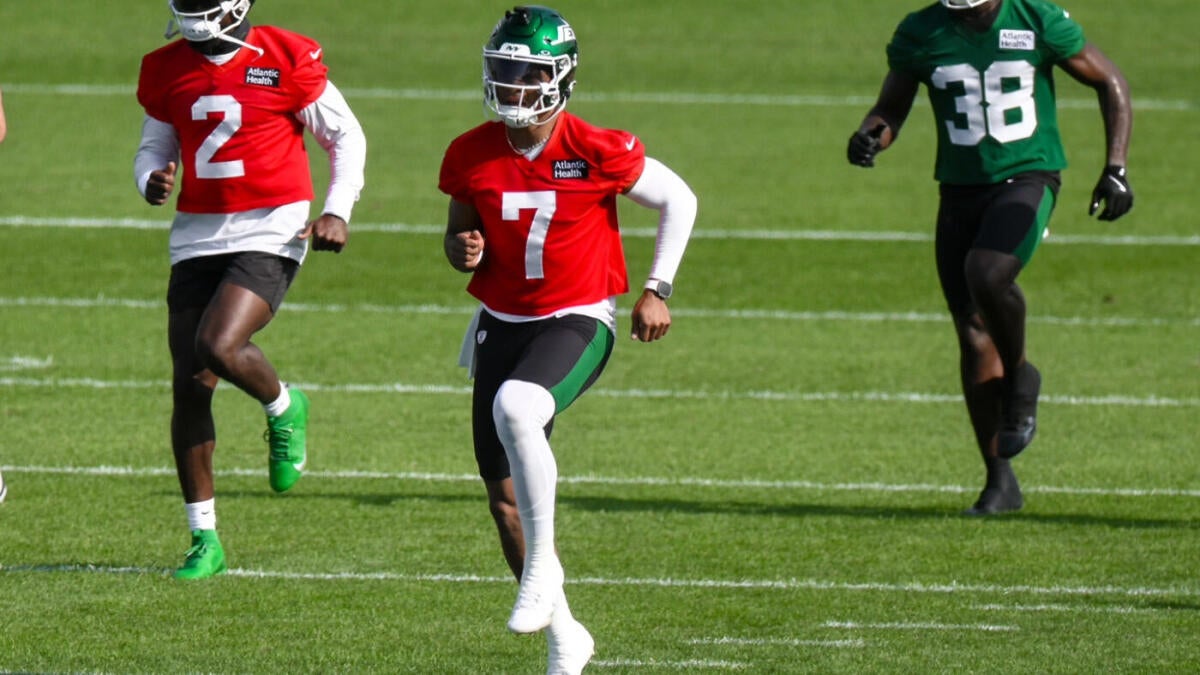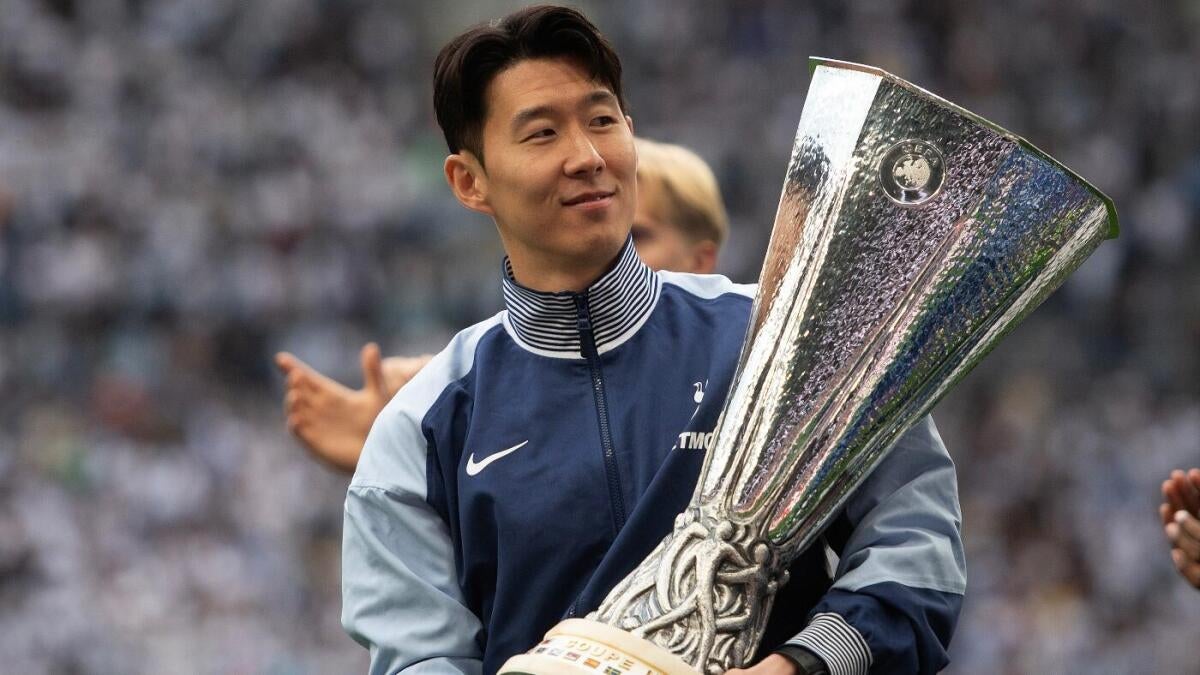The Ripple Effect of Justin Fields’ Toe Injury on the New York Jets
A Setback, Not a Catastrophe
The New York Jets’ training camp took an unexpected turn when quarterback Justin Fields was carted off the field with a lower leg injury. The sight of the team’s newly anointed starter being helped off the field sent shockwaves through the organization and fanbase alike. Initial fears of a season-ending injury were thankfully allayed, but the reality of a dislocated toe presents its own set of challenges. This injury, while not catastrophic, serves as a stark reminder of the fragility of professional athletes and the delicate balance of NFL training camps.
The Nature of the Injury: A Closer Look
Fields’ injury was diagnosed as a dislocation of a non-big toe on his right foot. This distinction is crucial. The big toe plays a pivotal role in a quarterback’s mechanics, providing stability and power during throws. An injury to this digit could have significant implications for Fields’ mobility and accuracy. However, the smaller toes, while still important, are less critical to a quarterback’s performance. The absence of a fracture is another positive sign, as fractures often require more extensive treatment and rehabilitation.
The dislocation occurred when Fields’ foot was stepped on during practice, a common occurrence in the physical environment of NFL training camps. While the injury is not severe, it is not insignificant. Dislocations can cause significant pain and swelling, limiting mobility and affecting a player’s ability to perform at their best. The Jets’ medical staff will need to carefully monitor Fields’ progress to ensure a full and speedy recovery.
The Uncertain Timeline: Day-to-Day Status
The Jets have labeled Fields’ injury as “day-to-day,” a term that is as vague as it is common in the NFL. This designation suggests that the injury is not expected to be long-term, but it provides little in the way of concrete information. “Day-to-day” could mean anything from a few days of rest to a week or more of limited activity. The vagueness is intentional, allowing the team to manage expectations and avoid giving opponents a competitive advantage.
The optimism that Fields could be ready for Week 1 should be tempered with caution. The recovery timeline for a dislocated toe can vary significantly depending on the severity of the injury, the individual’s pain tolerance, and the effectiveness of the treatment and rehabilitation. Fields’ dedication to his recovery will be a key factor in his return to the field.
The Impact on Training Camp: Lost Opportunities
Fields’ absence, even if brief, will have a tangible impact on the Jets’ training camp. He will miss valuable practice time, hindering his ability to further integrate into the offensive system and build rapport with his receivers. The timing of the injury is particularly unfortunate, as training camp is a critical period for quarterbacks to refine their mechanics, develop chemistry with their teammates, and prepare for the rigors of the regular season.
The injury also provides an opportunity for the Jets’ backup quarterbacks to step up and showcase their abilities. While Fields is the clear starter, having a capable backup is essential in the NFL. This situation allows the coaching staff to evaluate the depth at the quarterback position and identify potential weaknesses. The backups will need to be ready to fill in if Fields’ injury lingers or if he experiences any setbacks during the season.
The Long-Term Implications: Mobility and Performance
While the initial diagnosis is encouraging, the long-term implications of the toe injury should not be dismissed. Even after the initial pain subsides, lingering stiffness, instability, or discomfort could affect Fields’ mobility in the pocket. Quarterbacks rely on their feet to navigate pressure, create throwing lanes, and extend plays. If Fields’ ability to move freely is compromised, it could negatively impact his performance.
The Jets’ medical staff will need to closely monitor Fields’ progress throughout his rehabilitation. They will need to ensure he regains full range of motion, strength, and stability in his toe. A premature return to the field could risk re-injury or the development of compensatory movement patterns that could lead to other problems down the line. The team must prioritize Fields’ long-term health and well-being, even if it means sacrificing short-term gains.
The Psychological Factor: Confidence and Pressure
Beyond the physical ramifications, Fields’ injury could also have a psychological impact. The setback might shake his confidence, particularly if he’s still relatively new to the team. He might be hesitant to fully trust his injured toe, leading to tentative movements and a reluctance to take risks. This could affect his decision-making on the field, potentially leading to missed opportunities or turnovers.
The pressure on Fields to perform well will also intensify. He’s already facing high expectations as the team’s starting quarterback. The injury adds another layer of complexity, as he’ll need to prove that he can overcome this adversity and still deliver on his potential. The Jets’ coaching staff will need to provide support and encouragement, helping Fields regain his confidence and focus on his rehabilitation.
The Backup Plan: Preparing for the Worst
The Jets must have a solid contingency plan in place should Fields’ injury linger or if he experiences any setbacks during the season. The team’s backup quarterback situation will be under increased scrutiny. The coaching staff needs to be confident that the backup quarterback can effectively manage the offense and lead the team to victory if called upon.
This situation underscores the importance of investing in a quality backup quarterback. While it’s ideal to have a healthy and productive starter, injuries are an inevitable part of football. A capable backup can provide stability and prevent a season from unraveling due to a quarterback injury. The Jets’ depth chart at quarterback will be a key factor in their success, and the team must ensure they have a reliable option behind Fields.
The Road to Recovery: Patience and Prudence
The Jets and their fans need to exercise patience and prudence as Fields recovers from his toe injury. Rushing him back onto the field before he’s fully healed would be a mistake, potentially jeopardizing his long-term health and the team’s season. The coaching staff should prioritize Fields’ well-being, providing him with the necessary time and support to make a full recovery.
The team should also have a clear plan in place for managing Fields’ workload upon his return. Gradually easing him back into game action can minimize the risk of re-injury and ensure he regains his confidence and form. The Jets’ medical staff will play a crucial role in this process, monitoring Fields’ progress and making adjustments as needed.
Conclusion: A Test of Resilience
Justin Fields’ dislocated toe represents a hurdle, not a catastrophe, for the New York Jets. The absence of a fracture is a positive sign, and the team’s medical staff will undoubtedly work diligently to ensure a full recovery. However, the situation underscores the inherent fragility of football and the importance of having a solid plan B.
The Jets’ success in navigating this uncertainty will depend on a combination of factors: Fields’ dedication to his rehabilitation, the effectiveness of the team’s medical treatment, and the readiness of the backup quarterbacks. While the injury is undoubtedly a setback, it also presents an opportunity for the team to demonstrate its resilience and depth. Ultimately, the Jets’ ability to weather this storm will be a testament to their overall strength and preparedness for the challenges that lie ahead. The season is a marathon, not a sprint, and how the Jets respond to this early adversity will be a telling indicator of their potential for success.











